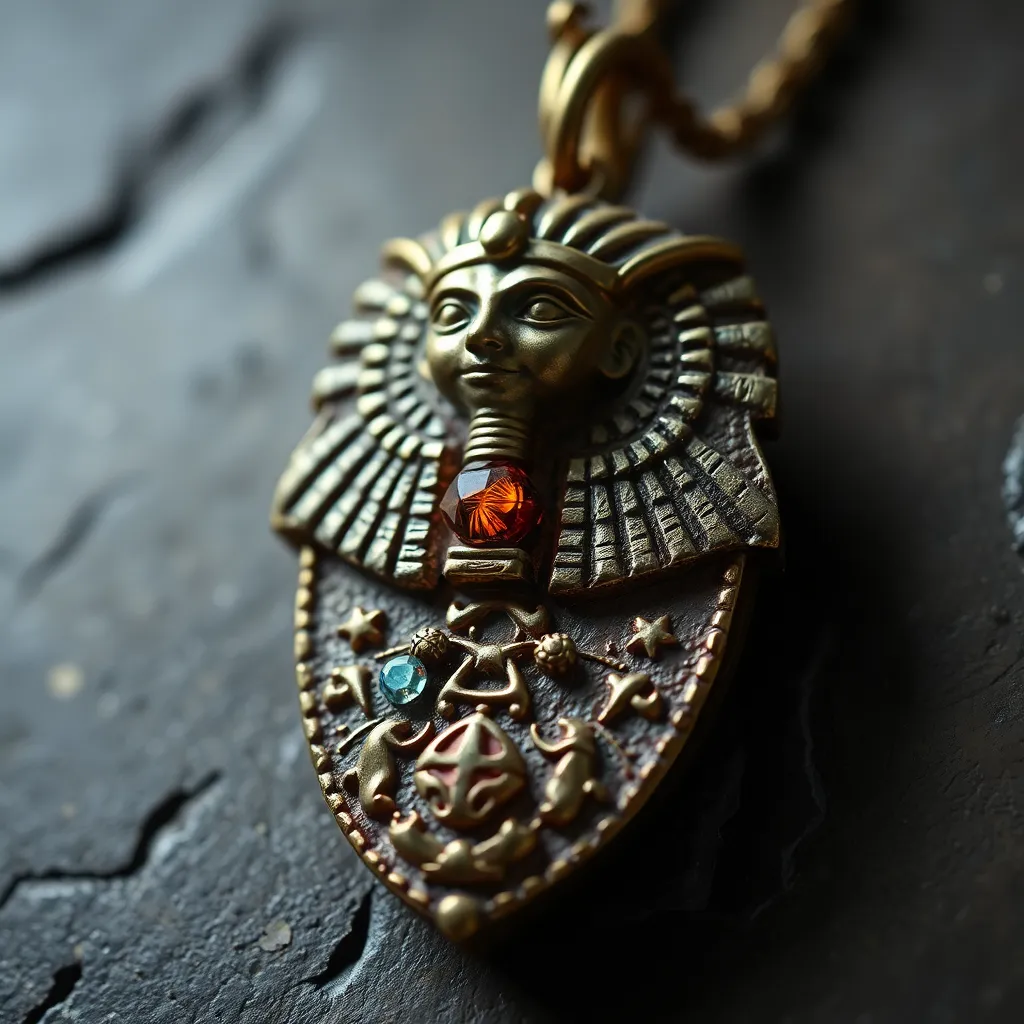The Use of Amulets in Egyptian Rituals for Protection
I. Introduction
Amulets have played a significant role in various ancient cultures, serving as objects believed to carry protective properties. In ancient Egypt, these small but powerful items were intricately woven into the fabric of daily life and spirituality. This article explores the use of amulets for protection in Egyptian rituals, highlighting their historical significance and cultural relevance.
II. Historical Context of Amulets in Ancient Egypt
The origins of amulet use in ancient Egyptian culture can be traced back to the early dynastic period (c. 3100-2686 BCE). Initially, amulets were simple objects, but as Egyptian society evolved, so did the designs and materials used in their creation.
Over time, amulets transformed from basic shapes into elaborate designs featuring various symbols and deities. They became more than just decorative items; they were imbued with spiritual significance, serving as conduits for divine powers.
In the context of Egyptian mythology, amulets were believed to provide protection against evil spirits, misfortune, and illness. Their use was closely tied to the belief in the afterlife, where they were thought to assist souls in navigating the challenges of the underworld.
III. Types of Protective Amulets
Amulets were crafted from a variety of materials, each chosen for its symbolic significance and believed protective qualities. Commonly used materials included:
- Stone: Precious and semi-precious stones like lapis lazuli and turquoise were popular.
- Metal: Gold and bronze amulets were often associated with wealth and divine favor.
- Clay: Simple clay amulets were accessible to all social classes.
Popular designs and symbols featured in protective amulets included:
- The Eye of Horus: A symbol of protection, health, and restoration.
- Scarab Beetles: Representing rebirth and transformation, scarabs were believed to protect the wearer.
- Ankh: The symbol of life and immortality, often included in amulet designs.
Specific amulets were created for various purposes, such as:
- Health: Amulets designed to ward off illness and promote well-being.
- Fertility: Items intended to enhance fertility and protect mothers and children.
- Safe Passage: Amulets meant to ensure safe travels in life and the afterlife.
IV. Rituals Involving Amulets
Rituals associated with the creation and activation of amulets were integral to their effectiveness. These rituals often involved specific prayers, incantations, and offerings to the gods.
Priests and practitioners played a crucial role in the ritual process, as they were believed to possess the knowledge and authority to invoke divine power. Their involvement ensured that the amulets were properly charged with protective energy.
Examples of specific rituals included:
- The Opening of the Mouth: A ceremony performed on mummies that also involved placing amulets to ensure the deceased could speak and eat in the afterlife.
- Warding Off Evil: Rituals that included the recitation of spells and the use of amulets to protect individuals from malevolent forces.
V. The Belief System Behind Amulet Use
The concept of divine protection was central to ancient Egyptian religion. Amulets were thought to connect the wearer with deities, who would provide safety and guidance.
There was a strong connection between amulets, the afterlife, and the gods. Many amulets were dedicated to specific deities, such as Isis and Osiris, who were believed to offer protection and assistance in the afterlife.
Psychological and cultural factors also influenced the belief in amulets. The pervasive fear of death and the unknown drove Egyptians to seek tangible forms of protection, often in the form of amulets.
VI. Amulets in Daily Life
Amulets were not just reserved for rituals; they were incorporated into the daily lives of Egyptians. People wore them as jewelry, carried them in their pockets, or placed them in their homes for protection.
In funerary practices, amulets held immense significance. They were placed on the bodies of the deceased to ensure safe passage to the afterlife and to provide protection against the dangers of the underworld.
Archaeological sites have uncovered numerous examples of amulets, showcasing their variety and the beliefs surrounding them. These findings provide valuable insights into the cultural practices of ancient Egyptians.
VII. Modern Interpretations and Uses of Amulets
Today, there is a renewed interest in ancient Egyptian amulets within contemporary culture. Many people are drawn to the mystical and protective qualities associated with these artifacts.
Modern spiritual practices often draw inspiration from ancient traditions, with individuals incorporating symbols and designs from ancient Egyptian amulets into their own spiritual rituals.
The impact of tourism has also led to the sale of replicas, which can shape perceptions of ancient amulets. While some view these replicas as mere souvenirs, others appreciate their historical significance and spiritual symbolism.
VIII. Conclusion
In summary, amulets were a vital part of ancient Egyptian culture, serving as protective objects embedded in rituals and daily life. Their significance stretched beyond mere ornamentation; they were believed to carry divine power and provide safety from harm.
The enduring legacy of amulets reflects the deep-rooted beliefs and practices of ancient Egyptians, offering us a glimpse into their worldview. Understanding the role of amulets in Egyptian rituals enriches our appreciation of their culture and spirituality, highlighting the universal human desire for protection and connection to the divine.




